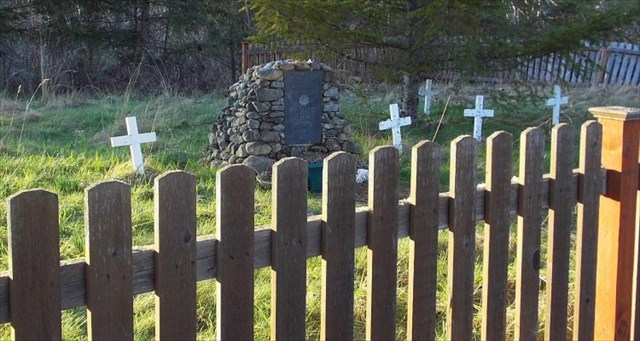Here you will find the final resting place of a truly unique man: born Soo-Too-Lick, but better known among his pioneer contemporaries as “Indian Henry.” Henry’s gravestone was created and dedicated in 1975 by a local 4-H group, and the little Indian Shaker Cemetery is today maintained and cared for by Boy Scouts.

The site Indian Henry chose when he settled here in 1876 was one with excellent soil but a dark heritage. Nearby is the location of the infamous Mashel Massacre of 1856, which occurred at the tail end of the Indian Wars, when a small band of Indians were ambushed and killed by a militia made up of local white settlers.
Henry’s own life was one of peace and tolerance, with a foot in both his native heritage and modern America. Various sources place his ancestry among the Klickitat, Yakama, or Cowlitz Tribes. Henry Windsor gave him his “Boston” (English) name in 1862 while exploring railroad routes with fellow pioneers William Packwood and James Longmire, joking that his native name was unpronounceable.
According to Indian custom, Henry had three wives, chosen from among the local Mashel tribes. When this was discovered by Judge James Wickersham, who had jurisdiction over the region, he was told that he would have to give two of them up—so he selected one and hired the other two. He apparently harbored no ill will, because he named one of his sons Wickersham Soo-Too-Lick.
In 1883, George Bayley of San Francisco hired James Longmire to guide him to Mount Rainier, which he intended to climb. Longmire, in turn, hired Indian Henry, at a rate of $2 per day. Henry guided them to the snowline, but waited below while the others summited. On their return, the group discovered mineral springs at the base of the mountain, and in subsequent years Longmire filed a mineral claim, built a rustic hotel, and hired Henry to blaze a rough trail. As Longmire’s resort began drawing more and more tourists, Henry’s home, near the confluence of the Mashel and Nisqually Rivers, became a popular place to spend the night en route. John Muir stayed here on his way to the mountain in 1888. Henry’s farm included horses, cows, and fields of wheat and vegetables. A small community grew up around him, a place where both Indians and white settlers were equally welcome. He became fluent in English and several Indian dialects, and converted to Christianity.
Henry died in 1895, and was buried in a poorly marked grave near about 20 other members of his church congregation. A small church was built to the east of the cemetery in 1913. Henry’s sons Thomas and Wickersham filed homestead claims on the family property, which lay west of this location, closer to the river. In 1934, the Works Progress Administration cleaned up the little graveyard and replaced the picket fence. Visitors have left mementos on the grave marker since its establishment in 1975.
Today, the land that surrounds this area is part of a new State Park in development. Future plans call for camping, picnicking, trails, and other recreation. Up on Mount Rainier, meanwhile, Henry’s name is attached to one of the most beautiful meadows on the old volcano, “Indian Henry’s Hunting Ground” on the southwest side, accessible by trail from Longmire or Kautz Creek.

2016 was the 100th anniversary of the National Park Service, and to celebrate, Visit Rainier and the Washington State Geocaching Association (WSGA) hosted the Visit Rainier Centennial GeoTour - 100 caches placed in and around Mount Rainier National Park. The geocaches highlighted the rich history, scenic wonders, quaint communities, and hidden gems of the Rainier region. The caches were released in four series of 25 caches each during 2015 and 2016.